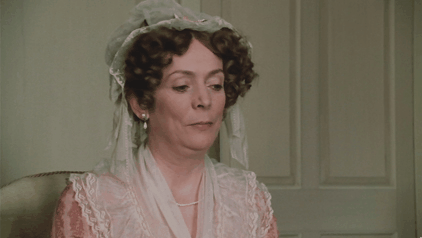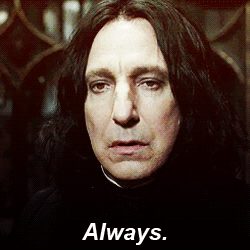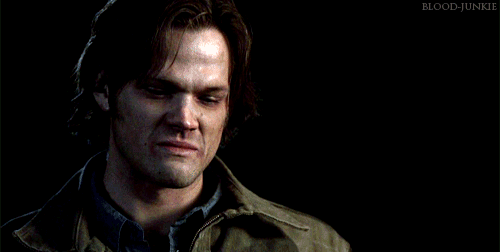Hello, wonderful people! No regular post today, but be sure to hop on over to the Spellbound Scribes where I’m giving tips on how to perfect the elusive art of character voice!!
Check back later this week for a return to regular posting!
Hello, wonderful people! No regular post today, but be sure to hop on over to the Spellbound Scribes where I’m giving tips on how to perfect the elusive art of character voice!!
Check back later this week for a return to regular posting!
Oh, hello there! I just finished a classic novel featuring a pretty awesome mom character, so even though I’m a few days late for Mother’s Day, I thought I’d put together a list of the literary mothers who, in my opinion, embody great maternal instincts.
As James Joyce once wrote, “Whatever else is unsure in this stinking dunghill of a world a mother’s love is not.” And that is true for all of the women on this list: they love their children. Some of these women are kind and nurturing, some of these women are fierce and protective, and some of them are difficult and dramatic, but they all share one important role: when it comes right down to it, they’d do anything and everything for their children.
Margaret March aka Marmee, Little Women by Louisa May Alcott
Although Marmee can come across as somewhat saccharine to a mature reader, to a young reader the March girls’ sweet mother embodies everything a mother ought to be. She nurtures and cares for her gaggle of girls while her husband is away fighting in the Civil War, with little money and few resources. She shapes her girls’ educations around her own strong moral code, and unlike some mothers on this list, never encourages them to marry for money. And all this without a frown or unkind word! Patience, thy name is Marmee.
Mrs Lancaster, The Fault in Our Stars by John Green
Hazel doesn’t always have the kindest thoughts about her mom; Mrs Lancaster is kind of the definition of a helicopter parent. But can you blame her? Her only daughter is slowly dying of cancer. She has given up nearly everything else in her life to become a stay-at-home mom for Hazel, taking care of all the medical details while also acting as emotional and social support for her ailing daughter. Mrs Lancaster goes out of her way to make celebrations big, to encourage Hazel to make the most of each day, and to be unafraid when facing the short time she has left. Go Mrs L!
Mrs Bennet, Pride & Prejudice by Jane Austen

“Moooom! You’re embarrassing me!”
Garrulous, self-absorbed and socially inept, Mrs Bennet wants nothing more than to see all five of her daughters married off to men with at least five thousands pounds a year. She spends a good portion of the book whinging, kvetching, and generally getting on everyone’s nerves, but beneath Austen’s humorous and somewhat insulting characterization is a mother deeply anxious for her children’s futures. If only she could realize that all her plotting is doing more harm than good!
Topaz, I Capture the Castle by Dodie Smith
Although technically a stepmother to Cassandra, Rose, and Thomas, Topaz is artistic and kind and competent and hard-working and a little bit mad. Her favorite pastime may be communing with nature while wearing nothing but a pair of wellies, but she also goes to bat for the Mortmain girls time and again, counting pennies and sewing crinolines and dyeing old tea-gowns so that they might have a shot at a better future. And all this while putting up with Mr. Mortmain at his most ineffectual and Rose at her most noxious, in a crumbling, dripping ruin of a castle! Phew! Go Topaz!
Molly Weasley, Harry Potter series by J K Rowling

“Not my daughter, you bitch!”
Molly Weasley ought to be sainted: she raised seven children in a rambling, magical house with barely any money and no help from her absent-minded dolt of a husband. And when she meets orphan Harry on Platform 9 3/4, she wastes no time in taking him under her already extended wing. When she discovers Harry won’t receive any gifts at the holidays, Molly knits Harry one of her famous sweaters, and continues to send one every year afterward. But aside from being a generous surrogate mom to Harry, Molly is also a staunch defender of good, a fearsome opponent in battle, and a furious protector of all her children.
Who are your favorite literary moms? Share your thoughts in the comments below!
Whether I’m reading, writing, or watching, I love a good romance. The angst, the anticipation, the passion; the alchemy of love is both mystery and motivation.
That being said, when romance is the only focus of a book or movie, it doesn’t do much for me. I need my romance to be solidly couched in a quality plot involving well-rounded characters with believable motivations. So when I read through the last few chapters of my manuscript today and realized with a jolt that I’d accidentally written the beginnings of a love triangle (oops!) I got a little nervous. I love a good love triangle as much as the next girl, but they can be tricky to pull off, especially since they can seem a little old hat if you’re not careful.
So, I thought I’d turn to my favorite literary love triangles and think about what aspects make them work…and which aspects I might want to avoid. (Mild spoilers follow, but I promise not to ruin any endings.)
Wickham, Lizzy, Darcy, from Pride & Prejudice, by Jane Austen

And then this happened.
Elizabeth Bennett usually has a sensible head on her shoulders, but when handsome, rakish, and charming George Wickham saunters into her life, she believes every lying word that comes out of his mouth. The caddish Wickham worms his way into her affections by telling tall tales about Mr. Darcy, which Lizzy is quick to believe because of her pre-formed prejudices about the snobbish aristocrat. Although the triangle is resolved fairly quickly, it generates the perfect amount of mayhem and hand-wringing in the characters’ lives.
Kathy, Tommy, Ruth, from Never Let Me Go, by Kazuo Ishiguro
The complicated love triangle begins when these children, doomed from birth, are young students at the idyllic Hailsham school. Kathy and Tommy’s intimate and potent connection cannot be denied, yet it’s Ruth who winds up in the tumultuous long-term relationship with Tommy. Later, she regrets keeping her friends apart, but love may not be enough to save Kath and Tommy from their looming fates.
Snape, Lily, James, from Harry Potter, by J K Rowling

*sob*
We finally get the full story of suspicious Potions professor Snape’s ill-fated love story in The Deathly Hallows, when Snape gives Harry his dying memories after being bitten by Voldemort’s pet snake. Although mistrusted by Harry and his friends throughout their years at Hogwarts, the revelation of Snape’s true motivations was poignant and heartbreaking. He loved Lily Evans so strongly and deeply that upon learning of her and his rival James’ murder at the hand of Voldemort he dedicated his life to protecting their only son.
He tried to do the right thing, all for a love that he would never have. Oh god, and his Patronus was a doe. I’m actually crying right now just thinking about it.
Rhett, Scarlett, Ashley, from Gone With the Wind, by Margaret Mitchell
Beautiful, vivacious and petulant Scarlett O’Hara is infatuated with dapper antebellum gentleman Ashley Wilkes in this famous civil-war epic, but Ashley is in love with kind, gentle Melanie. When bad-boy Rhett Butler sweeps Scarlett off her feet, the two seem made for each other. But Scarlett just can’t let Ashley go, and soon Rhett just “doesn’t give a damn.”
Gale, Katniss, Peeta, from The Hunger Games, by Suzanne Collins

“Wait, I have to pick?!?”
Baker vs. Hunter. Unflagging, unconditional love vs. Childhood flame. Memories of a shared horror vs. The promise of a vengeful future. Who will our steely-eyed heroine Katniss Everdeen choose? Peeta Mellarck, whose gentle demeanor belies his fierce love? Or angry Gale Hawthorne, who might choose a revolution over romance? No spoilers, but no lies: I was totally Team Peeta!
Naoko, Toru, Midori, from Norwegian Wood, by Haruki Murakami
Quiet, serious university student Toru Watanabe is in love with emotionally fragile Naoko, who voluntarily commits herself to a mountain asylum after the suicides of her sister and boyfriend. But when Toru meets unusual and vivacious Midori, who runs a bookstore to support her dying father, the two develop feelings for each other. Toru doesn’t want to abandon troubled Naoko, but can he make a decision before he alienates and hurts both girls?
Will, Tessa, Jem, from The Infernal Devices, by Cassandra Clare
I’ll be honest, this fantastical Victorian-era love triangle kept me up at night. When shapeshifter Tessa moves to London, she falls in with a group of demon-hunting Shadowhunters and quickly develops feelings for two handsome young men: fiery, caustic, and misunderstood Will, who insists on throwing himself in danger given the least provocation; and kind, artistic and sensitive Jem, who just happens to be dying of a slow and painful malady. Dying dying. Oh, and did I mention that the two boys are best friends and blood brothers, bound to protect and serve each other till death do them part? One of those love triangles where you feel guilty for picking a team…
Do you have a favorite literary love triangle? What did you love about it? Leave your thoughts in the comment section below!
Lá fhéile Pádraig sona dhaoibh! Happy St. Patrick’s day to you all!
I grew up in a family where we frequently and vocally celebrated our Irish heritage. My dad could often be seen sipping on a tall pint of thick, black Guinness, or tapping away on a bodhrán while singing a traditional Irish tune. My mom incorporated Celtic pagan traditions into our holiday celebrations and introduced us to Irish mythology. My younger siblings are named Shane and Siobhán. We even lived for a year in County Clare, just west of Lough Derg.
Because of this Irish-centric upbringing, I have mixed feelings about St. Patrick’s day. On the one hand, I’m happy that people want to celebrate the history of the Irish people and their impact on modern American culture. On the other hand, the whole kiss-me-I’m-Irish, dress-up-like-a-leprechaun, drink-green-beer-’til-I-puke thing is less than amusing, and some might argue even demeans the Irish heritage is claims to celebrate. So, to bring some sobering truth to an otherwise raucous holiday, I thought I’d share some facts about St. Patrick that you might not otherwise know!
1. St. Patrick wasn’t actually Irish.
Surprise! Patrick was born sometime in the 4th or 5th century AD in Roman Britain (various sources point to Cumbria, Scotland, and Wales as likely birth places for Patrick) to a family of Christian deacons and priests. He was kidnapped as a teenager by Irish pirates, and enslaved as a shepherd for a number of years until he was able to escape and return home to his family. Years later, he returned to Ireland as a Christian missionary, presumably to convert the pirates (!) and slave-owners (!) he had become so familiar with.
Hello, my lovelies! No regular post today, but be sure to hop on over to the Spellbound Scribes where I’m discussing the difference between magical realism and fantasy!
Check back later this week for a return to regular posting!
I have a newsflash, people: S. A. D. is real. (For those of you who don’t know, S. A. D. stands for Seasonal Affective Disorder, a mood disorder obviously named by scientists who thought they were hilarious.) And, more importantly, I think I have it.
I’m a Florida girl. I’ve lived in other places, sure, but when we get down to brass tacks I really enjoy the presence of sunshine in my life. Winters are pretty smooth sailing Down South, even in North Florida, where I’m from. January temperatures occasionally drop down into the teens at night, but usually warm up to sunny, bright, light-jacket weather in the afternoon. And by the time late February rolls around, cold weather is nothing more than a distant memory.

Pretty much this.
Well, folks, I live Up North now, where winter is a sadistic, soulless entity bent on crushing everyone’s hopes and dreams under an impenetrable layer of ice and snow. Darkness falls mere hours after the sun has risen (not that you’re likely to actually see the sun behind the dense grey clouds shrouding the world). Don’t even bother to look good: no one will be able to tell under the eighteen layers of clothing you’re wearing, and the snow will ruin those cute shoes. Ruin them dead.

I don’t understand why this white bullshit keeps falling from the sky.
I like the beginning of winter just fine. November’s still sort of autumnal, and December is full of holiday cheer and good will towards man. January? No. Just, no. The Winter Blues have officially set in, with an attendant host of fabulous and enjoyable symptoms.
Writing always came easy for me. When most kids my age were still struggling with mastering proper spelling, I was already scribbling away at elaborate fantasies inspired by the chapter books I checked out from the library. I wrote in my diary nearly every day, recounting adventures at school and cataloguing my dreams and aspirations (I wanted to be a vet and/or jockey, in case you were wondering). In high school, English was inarguably my best subject; I glowed with pride whenever my teacher read my essays aloud in class and jumped at the chance to complete creative writing assignments for extra credit.
But it wasn’t until I took an elective creative writing class in college that the idea of “being a writer” really took hold. The other students in the workshop were impressed with my writing; one girl said my style was “Fitzgeraldian” (considering F. Scott Fitzgerald was my favorite author at the time, this rated as high praise) and the professor said “the rhythm and pacing” of my prose was “exquisite.” (Other comments hinted that my prose tended to be purple and my plot lines were derivative. I chose to ignore those comments.)
And somewhere between one short story by Tobias Wolff and another by David Foster Wallace, an idea took hold: I could be a writer. I could put my innate talents to use and craft genius, wonderful, lucrative stories for a living. And so it began. I gleefully penned my first few short stories, and incubated the idea for my first novel. And then I wrote my first novel. My first novel! I had arrived!
I won’t lie: visions of sugarplums (or more accurately, six-figure book deals) danced in my head. But it wasn’t long before I realized the truth: that vision couldn’t have been more naive.
Mention the words “info dump” to any self-respecting writer and they’re bound to go a bit green around the gills. The two dreaded words refer to exposition in a story or novel that, rather than being doled out sparingly throughout the manuscript, happens all at once. The action is moving along, the characters are doing their thing, and then all of a sudden–BAM! The author drops a big dump-truck full of information on the unsuspecting reader.
As you have probably inferred from my description, info-dumping is not a good thing. Even if the information is crucial to the reader’s understanding of what’s happening in the book, exposition done poorly is usually bad news for a story. The most rip-roaringest of adventures will screech to a grinding halt when faced with an info-dump. The swooniest romance will suddenly feel dry and boring. Mysteries heave a last gasp and then die.
But the problem is, exposition is hard. An author, who is intimately familiar with her setting, her plot, and her characters (having, um, created the whole thing), must find a way to give her readers enough information to understand the story without smothering them under a pile of history, backstory, and unnecessary detail. She must avoid info-dumping at all costs. But, to make her job even harder, she must also avoid the opposite problem–not providing enough exposition in crucial points, leaving her readers confused and frustrated because they don’t know what’s going on.
Just before the holidays, I turned on the Fellowship of the Ring movie in a fit of nostalgia and passively watched as I cleaned the apartment. And somewhere between vacuuming at Rivendell and swiffering at Lothlorien, I realized something I’d never realized before: Sauron is a terrible villain.
I mean, once you get past the admittedly terrifying lidless-eye Panopticon thing, Sauron is pretty simplistic as a villain. He’s evil–that’s about it. Why did he secretly forge the One Ring in the first place? To rule all the other Rings of Power. Why would he want to rule the elves, the dwarves, and mankind? Duh–evil! Why did he send his Host against the army of the Alliance on the plains of Dagorlad? Evil! Why is he obsessed with getting the One Ring back from Frodo and taking over Middle-earth? Evil, evil, evil!
As a writer, you hear a lot of the same advice over and over again. And when it comes to villains and antagonistic forces, the advice is always the same: one-dimensional villains just don’t cut it. Your villain must be more than just evil–he or she must be as well-rounded and complex as your other characters. The villain must have a backstory that explains his actions and lends his motivations depth and flavor. Furthermore, the villain’s actions must arise from a place of logic; even if it is a flawed, unsound logic, his actions must be comprehensible, if not sympathetic, to the reader. The villain’s role is to challenge the hero to reach great heights. He must act as both a catalyst for heroism and a foil for the hero’s own complex motivations.
Hello, my lovelies! No regular post today, but be sure to hop on over to the Spellbound Scribes blog to read about my fool-proof cures for book hangovers! Don’t know what a book hangover is? Don’t worry, I explain it in the post.
Check back later this week for a return to regular posting!